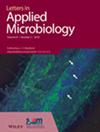Isolation and characterization of pathogenic Vibrio alginolyticus from sea cage cultured cobia (Rachycentron canadum (Linnaeus 1766)) in India
Abstract
Mass mortalities of cobia, Rachycentron canadum, sub-adults occurred during August 2013 in cage culture in the Gulf of Mannar, Mandapam Tamil Nadu, India. The epizootic of disease was started with typical classical clinical signs followed by acute mortality. Grossly, severe haemorrhage and congestion were observed in the gastric mucosa. The abdomen was distended with peritoneal fluid. The heart revealed haemopericardium and fibrinous pericardium. Histologically, the gastric mucosa showed severe erosion and necrosis. Haemorrhagic pericarditis and an increased size of the melano macrophage centre (MMC) in the tail kidney were other histopathological changes. Vibrio sp. was isolated from the gastric lesions and heart blood swab of moribund fishes and it was found to be virulent to the cobia fingerlings. After the challenge, the same bacterium could be re-isolated from moribund fingerlings. The 16S ribosomal RNA of the isolate was amplified and blast analysis of the sequence confirmed that the pathogen was Vibrio alginolyticus. The confirmation was also correlated with its cultural, biochemical and pathomorphological changes. This is the second report and the first incidence of epizootics with severe pathological lesions in cultured cobia in India. The study throws light on the pathology of vibriosis. By practising cage farm management measures, occurrences of infection may be prevented.
Significance and Impact of the Study
The epizootics of vibriosis caused serious economic losses to farmers. Natural blooms of the pathogen can be prevented by sea cage management measures such as, changing the inner net of the cages, changing the location of the cages to relatively clean water (about 50?m apart) from the affected site and providing shade over the cages while the water temperature rises. Supplementation of the feed with immunostimulants and mineral mixture may be practised to improve the immune response against infection. Early diagnosis and sea cage management measures may prevent occurrences of the infection.





